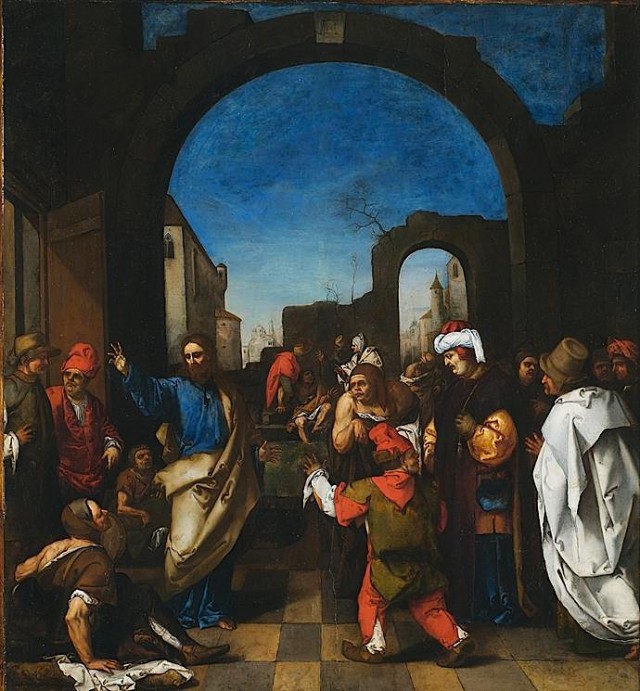
Around 1653, this panel was bought as a work by Albrecht Dürer that had been painted in Germany 150 years earlier—until Luca Giordano, the great Baroque painter, revealed that it was a recent product of his. The incident is featured in a new book by Noah Charney called The Art of Forgery, which Charney and I will be discussing tonight at the 92nd Street Y in New York.
As Charney explains, the painting’s buyer brought suit when he found out that it was a forgery by Giordano. The judges in the case absolved Giordano, however, because the painting proved that he was as great a talent as Dürer, so its purchaser ought not to have complained. (The painting is now in the National Gallery in Athens, whose website provides more details.)
I think the case is especially important because it signals a moment when ideas about the making of pictures and their place in history were changing. (I’m basing what follows on ideas cribbed from Anachronic Renaissance, the book by Alexander Nagel and Christopher Wood.)
Giordano’s angry client could only mistake such an un-Dürerish, Italianate picture for a work by the German because, around 1650, the “historicity” of pictures could still be judged by the information they presented, rather than the style they were painted in. That is, because Giordano’s painting was full of accurate, Dürer-era clothing and details, there was a sense that it ought to “count” as belonging to Dürer’s time. The buyer only brought suit because that older model for understanding a painting’s “chronicity” was banging up against the new idea that a work’s historical status depended entirely on the actual moment when its paint was laid down, as witnessed by what it looked like.
The very nature of forgery is always more in play than we tend to think—as I hope we’ll be discussing tonight at the Y.
For a full survey of past Daily Pics visit blakegopnik.com/archive.